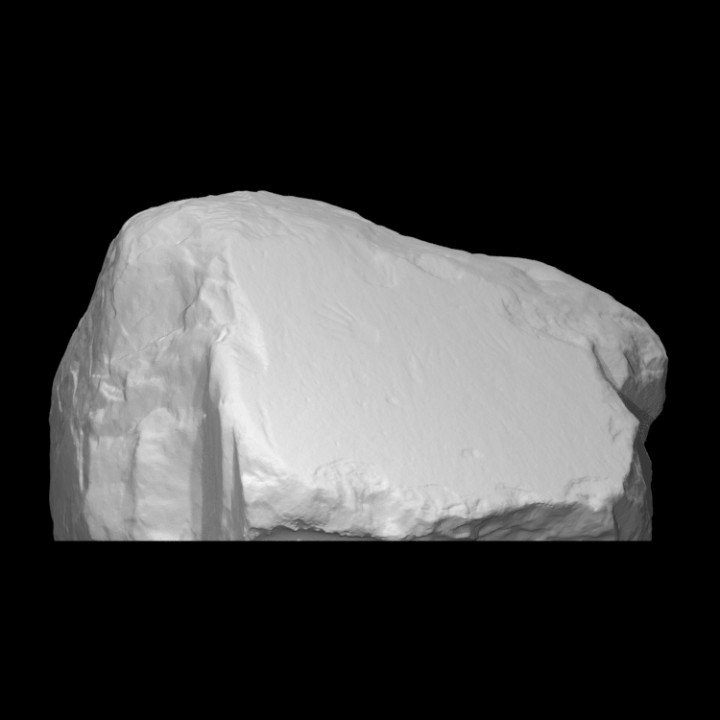
Prayer Rock
myminifactory
A general history of the "Prayer Rock." The Search In 1924, Richard Pettigrew embarked on a quest to find a sacred boulder for his museum in Sioux Falls. He had heard about a large rock with symbols near Gettysburg, South Dakota called Medicine Rock. Pettigrew wanted to acquire a similar rock to preserve and display its unique carvings. He asked E.S. Peterson of Mobridge and J.W. Parmely of Ipswich to start searching for a suitable piece. A massive boulder was discovered by Peterson with several large hand prints, but he estimated it weighed 15 to 20 tons. Pettigrew believed it was too heavy to transport to Sioux Falls and requested the search continue for a smaller boulder. Eventually, this three-ton example was found on a ranch near Evarts, South Dakota. The ranch belonged to J.J. Bentz, but was rented by Ed Klein. Pettigrew purchased the boulder from Bentz and hired Klein to remove it and transport it to the railroad station at Mobridge. Ed Klein assembled a team of six men to move the rock into town, an 17 mile trip. The first attempt to move the boulder used a 15-horsepower engine and leverage, but after four hours they had made little progress. It took six men, two wagons, and eight horses to pull the boulder free from the earth and move it to the railroad station. Pettigrew paid Mr. Klein and his team $75 for their work and an additional $75 to transport the boulder from the depot to his home once in Sioux Falls. Pettigrew placed the boulder outside his home and museum in 1925, where it has been on exhibit ever since. Journal Inset In 1926, a man asked a Sioux Elder about the age of the carvings on this type of rock. The reply: "My grandfather was an old man when I was young. When he was a young boy, the rock was already carved." R.F. Pettigrew correspondence, January 11. Rock Art Rock art has been recorded in this region since early exploration by whites. References to it appear in the journals of explorers like Pierre de la Verendrye, Lewis and Clark, and Prince Maximilian. Because of past residents, areas of North Dakota and northern South Dakota have been more likely places to discover unique rock art styles. Experts disagree about when rock art work was created, who used it, or why it was made. Further investigation has found that tribes like the Sioux, Mandan, and Hidatsa all have a history with the spiritual power of rocks. "Prayer rocks," such as this one, are carved with images of people, animals, hoof prints, hands, and feet. Unlike pictographs where images are painted onto the surface, these shapes are characterized as petroglyphs because they are carved into the stone. Many early recordings describe prayer rocks as being painted with a red ochre paint. This rock may have been painted red at one time, mixing pictographs with petroglyphs. The carvings on this boulder are of adult hands and a child's foot. The open hand was sometimes a symbol of peaceful living and open spiritual prayer.
With this file you will be able to print Prayer Rock with your 3D printer. Click on the button and save the file on your computer to work, edit or customize your design. You can also find more 3D designs for printers on Prayer Rock.
